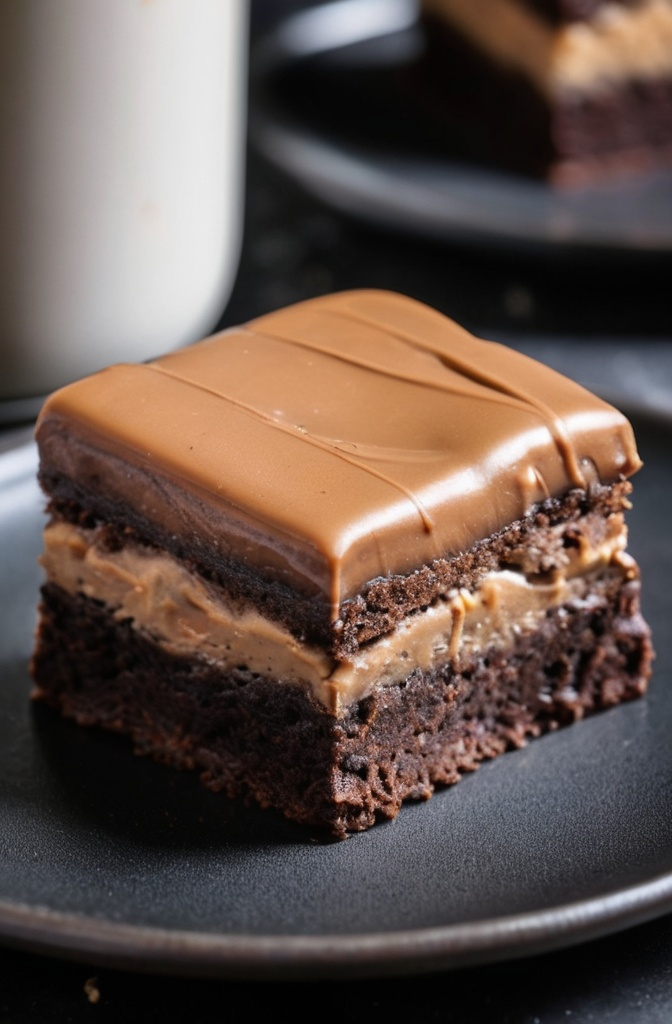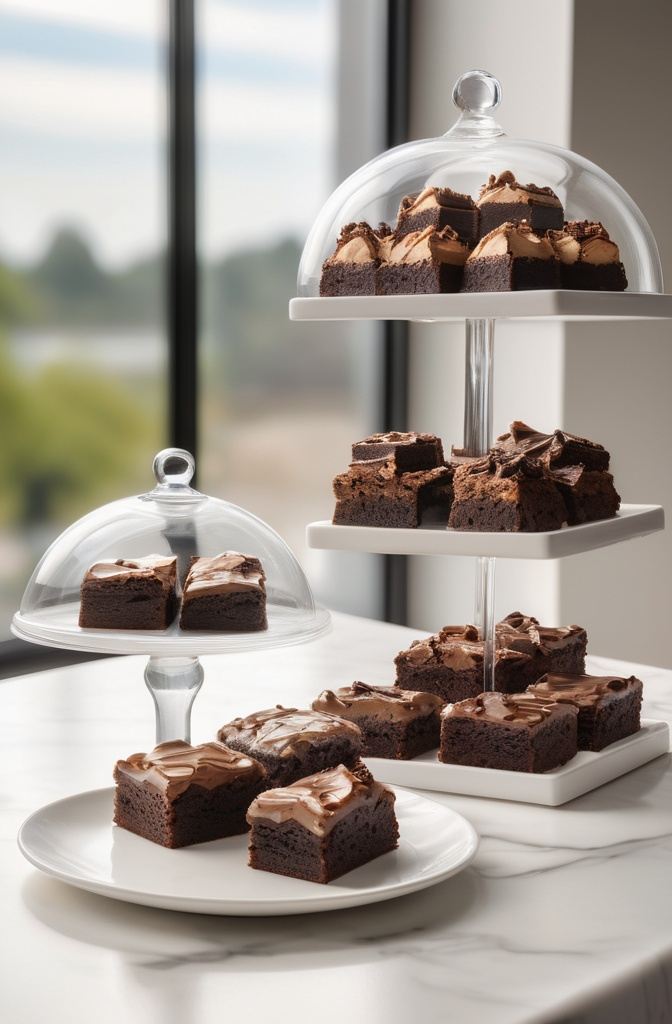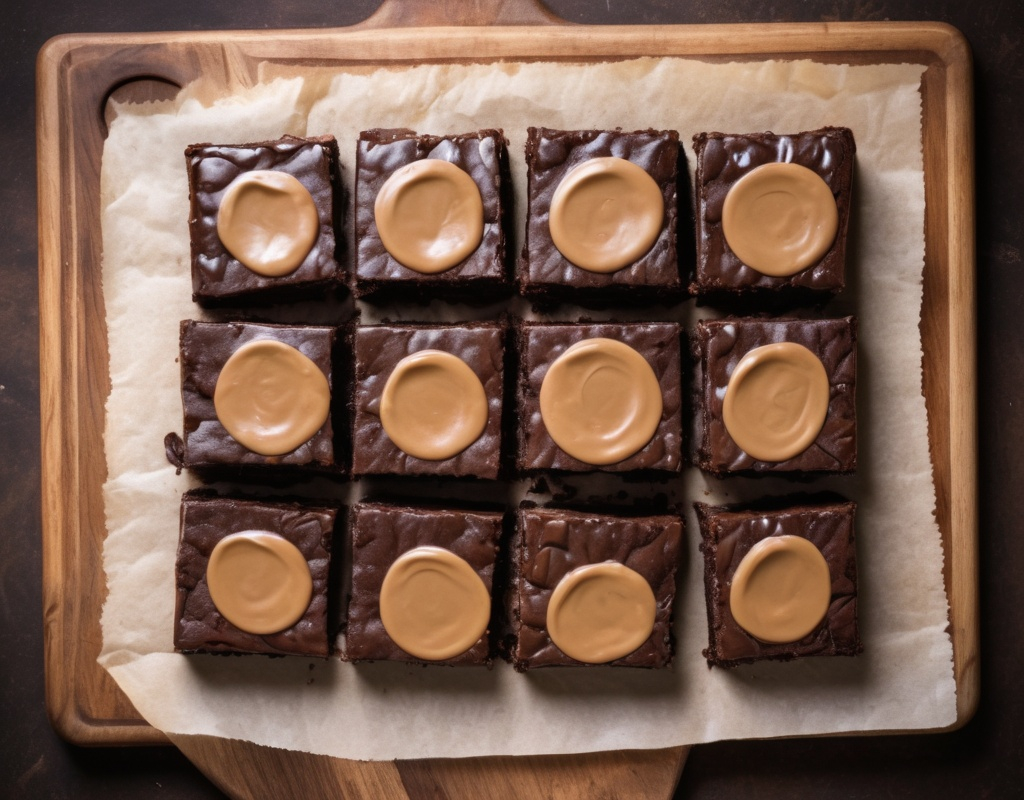Buckeye Brownies. The name alone starts a sugar storm in your brain before your tongue even gets involved. But don’t let the dessert’s childlike charm fool you. These aren’t your average chocolate squares. They’re a culinary balancing act. A layered expression of texture, chemistry, and nostalgia—and they’re increasingly making their way into serious dessert menus across the country.
This article peels back every gooey, peanut-buttery layer of this Midwest-born indulgence. Whether you’re a pastry chef looking to elevate your offerings or a bakery owner eyeing the next customer magnet, understanding the anatomy and alchemy of Buckeye Brownies is more than worth your time.
The Origin: Buckeyes Go Rogue
First, some backstory—because no dessert, no matter how delicious, just pops into existence fully formed.
The classic Buckeye candy, named after the nut of the Ohio state tree, is essentially a peanut butter ball dipped in chocolate. It’s what you’d get if a Reese’s Cup and a truffle had a baby. The brownies, though, take it a step—or maybe ten—further. Around the early 2000s, home bakers in Ohio began baking dense, fudgy brownies and slapping a layer of peanut butter fudge on top, finishing with a glossy ganache. What began as a Pinterest trend turned into a nationwide sugar ritual.
And now? They’re showing up in high-end patisseries and boutique cafés, served with smoked salt or espresso whip. Call it dessert gentrification or call it evolution—either way, it’s happening.
Why They Work: The Architecture of Decadence
A Buckeye Brownie is all about contrast. Textures, flavors, and temperatures fight for dominance—and somehow everyone wins.
At its base, you’ve got the brownie layer. Not cake-like. Not chewy. Fudgy. Dense. It should cling to your teeth like a toddler at a birthday party.
Next, the peanut butter layer. This isn’t just peanut butter smeared on top. No, ma’am. We’re talking peanut butter mixed with powdered sugar and butter, whipped into submission until it’s silky but holds its shape like a firm mousse.
Top that with a glossy ganache. Semi-sweet chocolate and cream—maybe a whisper of corn syrup if you’re going for shine that blinds. You bite in and first it’s soft resistance, then melt, then chew. Boom. All systems go.
Each layer has a job. Screw up the proportions and the whole thing collapses—too sweet, too sticky, too dry. A proper Buckeye Brownie is less about indulgence and more about engineering.
Ingredient Deep Dive: Quality Matters More Than Ever
In a professional kitchen, you don’t have the luxury of mediocrity. One wrong note and your whole dessert menu takes a hit. Let’s break it down, layer by layer.
Brownie Layer
Use couverture chocolate. If you’re still melting down chocolate chips, please—just stop. Go for 60–70% cocoa solids. Valrhona or Callebaut are both industry staples. You want deep, bitter tones to balance the sweetness of what’s coming next.
For the fat, butter over oil. Always. Unsalted. Clarified if you’re really going all-in. Flour should be all-purpose, but sifted. Skip baking powder—this isn’t a cake. You want density, not lift. Think brick, not balloon.
Peanut Butter Layer
You need creamy peanut butter with no added sugar. No Skippy, no Jif. Go for brands like Adams or grind your own if you’re control-freaky like that. Mix with softened butter (again, unsalted), vanilla, and confectioners’ sugar until it forms a thick paste. Chill it. Then spread it.
Some chefs incorporate a touch of cream cheese here for tang. Others spike it with bourbon for a grown-up twist. Either way, the key is balance—too much sugar and you’re in toothache territory.
Ganache
Equal parts heavy cream and good-quality chocolate. Don’t microwave it. Heat the cream to a gentle simmer and pour over chopped chocolate. Let it sit before stirring. Patience pays off here.
A little butter adds sheen and richness. Don’t skip it. And for a sophisticated finish? Maldon salt flakes. Not optional.

Modern Twists: Where Professionals Are Taking It
Buckeye Brownies have gone from rustic to refined in the last five years. Some notable spins:
- Salted Tahini Buckeye Brownies
Swapping out peanut butter for tahini isn’t just trendy—it’s a flavor revelation. Savory, nutty, slightly bitter. It turns the whole dessert sideways in a good way. - Espresso Ganache Finish
A splash of brewed espresso or espresso powder in the ganache deepens the chocolate profile. This technique is beloved in bakeries where flavor depth is gospel. - Infused Butter Bases
Some pastry chefs are infusing the butter in the brownie layer with browned butter or even chili oil for a subtle kick. Risky? Yes. But when done right, unforgettable. - Gluten-Free Versions That Don’t Suck
Using almond flour or a blend of rice and tapioca flours, it’s possible to achieve a gluten-free brownie layer that isn’t just a sad imitation. But it takes testing. Lots of it.
Shelf Life, Storage, and Selling Strategy
Here’s the thing nobody tells you: Buckeye Brownies are storage divas.
They hold best in refrigeration for up to 5 days, but you have to account for moisture migration. That peanut butter layer will sweat if your ganache isn’t properly tempered or your brownie isn’t cooled completely before layering. Always chill each layer before adding the next.
Selling them? Position them as premium. This isn’t a throwaway treat. Price them like you mean it. They’re rich. A 2-inch square is enough, which means you get excellent yield-per-batch. Dress ’em up in parchment and a ribbon, or plate them with crème anglaise and microgreens if you’re at the fine-dining level.
Nutrition? Don’t Ask—But Here’s What to Know
No one’s pretending these are healthy. But they’re not meant to be. That said, some insight:
- One average Buckeye Brownie clocks in around 420–520 calories.
- Fat content hovers around 25–30 grams, depending on the cream and chocolate.
- Sugar? Expect around 35–40 grams per piece.
That means they’re a sometimes food. Unless you’re selling in a gym cafe, don’t worry too much. But if you are looking to lighten them up, reducing the sugar in the peanut butter layer by 15% typically doesn’t affect structure. Just test carefully.

Common Mistakes That Wreck Everything
Even pros mess this up sometimes. Here’s what not to do:
- Overbake the brownie layer. It should pull back from the sides but jiggle slightly in the center. Residual heat does the rest. Don’t wait till it’s fully set.
- Layer while warm. Every layer must be cool before adding the next. Otherwise? Melt. Mush. Misery.
- Skimp on the chill time. Ganache sets slow. Rushing it leads to smears instead of slices.
- Use cheap peanut butter. The emulsifiers mess with texture. Period.
What the Pros Are Saying
Chef Haley Conner of Portland’s Crumb Theory says Buckeye Brownies are her best-selling dessert—beating out cronuts and cheesecakes. “They’re nostalgia with a diploma,” she jokes. “You think you know what you’re getting, but we elevate every layer.”
A 2024 survey by Bakery & Snacks Weekly reported a 38% increase in boutique bakeries offering layered bar desserts, with Buckeye-style items leading the charge. That’s a trend with legs, not a flash in the pan.
Conclusion: Why This Dessert Should Be in Your Arsenal
Buckeye Brownies are more than a sugar bomb. They’re an exercise in layered precision. They offer room for creativity but demand discipline. And best of all? They sell.
If you’re running a kitchen, you already know—profit margins on premium desserts are gold. With a few tweaks and some smart marketing, these brownies go from bake-sale fare to brand cornerstone.
So yeah, maybe they’re messy. Maybe they take a bit of chill time and patience. But when done right? They’re unbeatable. A crowd-pleaser that’s also a chef’s canvas.
And let’s be honest—you’d be a bit daft not to try.
FAQs
What are Buckeye Brownies?
Buckeye Brownies are layered desserts combining fudgy brownies, peanut butter filling, and chocolate ganache, inspired by the classic Buckeye candy.
Where did Buckeye Brownies originate?
They originated in Ohio as a twist on the traditional Buckeye candy, gaining popularity through home bakers and online trends.
What kind of chocolate is best for Buckeye Brownies?
High-quality couverture chocolate with 60–70% cocoa solids like Valrhona or Callebaut is ideal.
Can I use natural peanut butter?
Yes, but it should be unsweetened and smooth, with stable consistency for the best structure.
Are Buckeye Brownies gluten-free?
Not by default, but they can be made gluten-free using almond flour or specialty flour blends.
How should Buckeye Brownies be stored?
Store them refrigerated in an airtight container for up to 5 days, with layers fully chilled between assembly.
What’s the ideal portion size?
A 2-inch square is standard, as the dessert is very rich and filling.
Can I freeze Buckeye Brownies?
Yes, tightly wrap and freeze for up to 2 months, then thaw in the fridge before serving.
How do I price Buckeye Brownies for sale?
Price them as premium desserts due to ingredient quality and labor—think $4–$6 per serving retail.
What’s the biggest mistake to avoid?
Layering while warm—each layer must be completely cooled before the next is added.
How many calories are in a Buckeye Brownie?
On average, each serving contains around 420–520 calories.
Can I add different flavors to the peanut butter layer?
Yes, you can add ingredients like bourbon, espresso, or cream cheese for complexity.
Are Buckeye Brownies trending in professional bakeries?
Yes, there’s a growing trend with variations showing up in boutique bakeries and upscale dessert menus.
What’s a good modern twist on the classic recipe?
Try tahini instead of peanut butter or espresso in the ganache for a sophisticated variation.
Do Buckeye Brownies need to be refrigerated?
Yes, refrigeration helps maintain their structure and freshness, especially for the ganache and filling.

Mariana is a passionate home cook who creates delicious, easy-to-follow recipes for busy people. From energizing breakfasts to satisfying dinners and indulgent desserts, her dishes are designed to fuel both your body and hustle.
When she’s not in the kitchen, she’s exploring new flavors and dreaming up her next recipe to share with the Foodie Hustle community.

